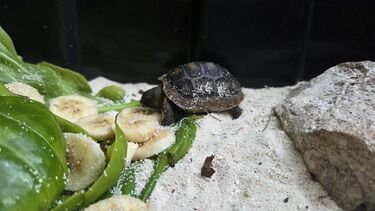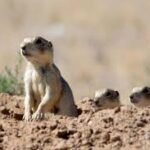Conservation Boost for the Aldabra Giant Tortoise
The Aldabra giant tortoise, native to the Seychelles, ranks among the largest and longest-living reptiles in the world. These tortoises can weigh up to 250kg and live for over a century. However, natural hatching rates in the wild have remained alarmingly low. A recent breakthrough in Aldabra giant tortoise artificial incubation has brought new hope, with 13 hatchlings successfully born through this method — a first for the species.
To improve survival rates, conservationists collected 18 eggs from a single nest on Cousin Island. Using controlled artificial incubation techniques, they helped 13 tortoise hatchlings emerge safely. These young tortoises now thrive on a diet of banana slices and leafy greens. youtube.com/shorts/88TRaUlwjVQ
Science Behind Aldabra Giant Tortoise Artificial Incubation
The research team used advanced diagnostic tools to examine whether undeveloped eggs had been fertilised. They discovered that 75% of the eggs were fertilised, but the embryos had died early—mostly due to environmental stress, not genetic problems.

“This success with Aldabra giant tortoise artificial incubation proves how targeted conservation can make a real impact,” said Dr. Alessia Lavigne, one of the lead researchers on the project.
Wild Nesting Still Faces Major Challenges
Even with these successes, natural reproduction continues to struggle. The Aldabra giant tortoise remains classified as vulnerable by the IUCN. Sailors wiped out populations across most Indian Ocean islands in the 19th century, leaving Aldabra Atoll—now a UNESCO World Heritage site—as their primary refuge.

Conservationists have introduced tortoises to other islands like Cousin to create backup populations. However, juvenile sightings remain rare. Experts point to poor nesting conditions—such as soil temperature, moisture, and structure—as likely causes of failure.
Artificial Incubation: A Support Tool, Not a Long-Term Fix
Although artificial incubation offers a valuable safety net, scientists agree it shouldn’t replace natural reproduction.
“These eggs proved viable under lab conditions,” said Dr. Nicola Hemmings from the University of Sheffield. “Now, we must focus on improving natural nest conditions to boost wild hatchling success.”
The research team plans to monitor nesting environments more closely and adjust variables like humidity, temperature, and soil quality to support better outcomes in nature.
Expanding the Impact: Global Conservation Connections
Researchers hope to share their Aldabra giant tortoise artificial incubation success with global partners, including conservationists in the Galápagos Islands—the only other home to giant tortoise species.
By promoting both habitat restoration and selective use of artificial incubation, the team aims to build a global model for endangered reptile conservation.




